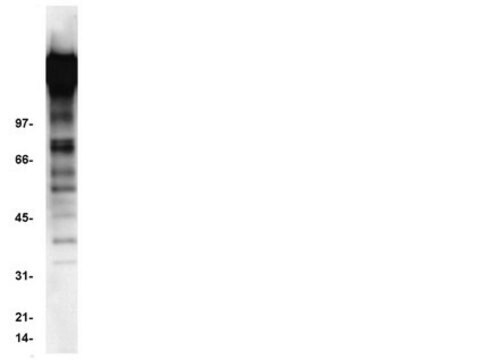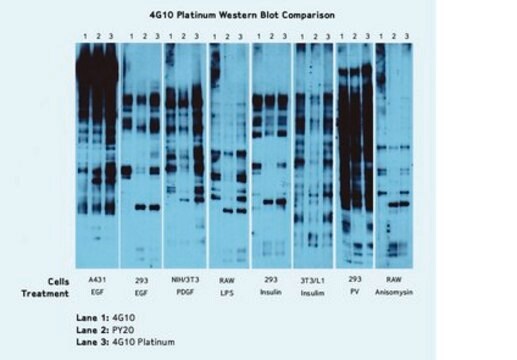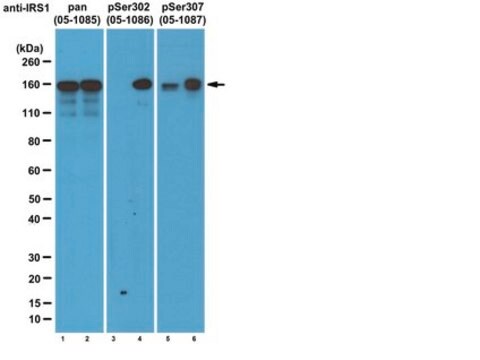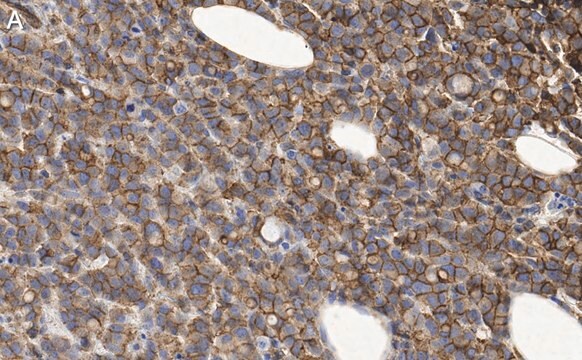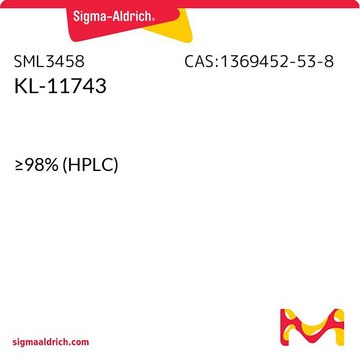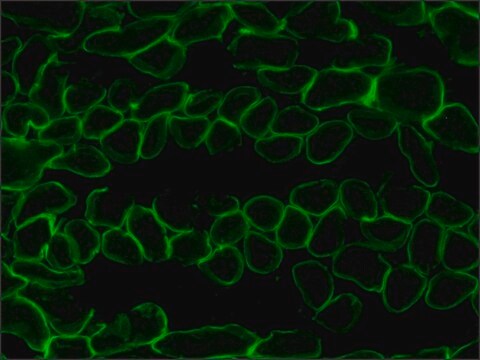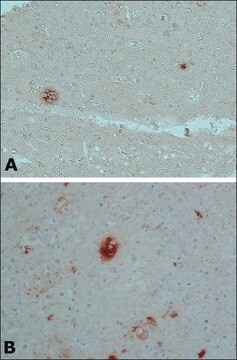16-105
Anti-Phosphotyrosine Antibody, clone 4G10®, HRP conjugate
clone 4G10®, Upstate®, from mouse
Synonym(s):
Anti-phosphotyrosine antibody
About This Item
Recommended Products
biological source
mouse
Quality Level
conjugate
peroxidase conjugate
antibody form
purified immunoglobulin
antibody product type
primary antibodies
clone
4G10®, monoclonal
species reactivity (predicted by homology)
all
manufacturer/tradename
Upstate®
technique(s)
ELISA: suitable
western blot: suitable
isotype
IgG2bκ
shipped in
wet ice
target post-translational modification
phosphorylation (pTyr)
Gene Information
human ... PID1(55022)
General description
Description
IgG2bκ mouse monoclonal antibody produced in vitro by mouse-mouse hybridoma 4G10. Purified by Protein G-Sepharose chromatography and cross-linked to horseradish peroxidase.
Specificity
Immunogen
Application
Signaling
General Post-translation Modification
Quality
Western Blot Analysis:
Tested at 0.5-2 μg/mL, with optimal performance at 2 μg/mL (10 μL per 10 mL blocking buffer). This lot detected tyrosine-phosphorylated proteins in RIPA lysates from EGF-treated human A431 carcinoma cells.
Target description
Physical form
Storage and Stability
NOTE: For optimal performance, remove HRP precipitate by centrifuging vial prior to use.
Analysis Note
Pervanadate-treated human A431 cell extracts, EGF-treated human A431 cells.
Legal Information
Disclaimer
Not finding the right product?
Try our Product Selector Tool.
Signal Word
Warning
Hazard Statements
Precautionary Statements
Hazard Classifications
Aquatic Chronic 2 - Skin Sens. 1
Storage Class Code
12 - Non Combustible Liquids
WGK
WGK 3
Flash Point(F)
Not applicable
Flash Point(C)
Not applicable
Certificates of Analysis (COA)
Search for Certificates of Analysis (COA) by entering the products Lot/Batch Number. Lot and Batch Numbers can be found on a product’s label following the words ‘Lot’ or ‘Batch’.
Already Own This Product?
Find documentation for the products that you have recently purchased in the Document Library.
Our team of scientists has experience in all areas of research including Life Science, Material Science, Chemical Synthesis, Chromatography, Analytical and many others.
Contact Technical Service